 W
WA transistor computer, now often called a second generation computer, is a computer which uses discrete transistors instead of vacuum tubes. The first generation of electronic computers used vacuum tubes, which generated large amounts of heat, were bulky and unreliable. A second generation of computers, through the late 1950s and 1960s featured circuit boards filled with individual transistors and magnetic core memory. These machines remained the mainstream design into the late 1960s, when integrated circuits started appearing and led to the third generation computer.
 W
WThe ASC-15 was a digital computer developed by International Business Machines (IBM) for use on the Titan II intercontinental ballistic missile (ICBM). It was subsequently modified and used on the Titan III and Saturn I Block II launch vehicles.
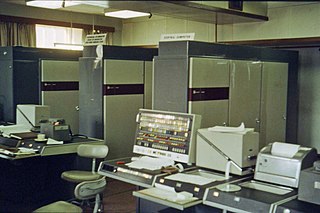 W
WThe Atlas Computer was one of the world's first supercomputers, in use from 1962 until 1971. It was considered to be the most powerful computer in the world at that time. Atlas' capacity promoted the saying that when it went offline, half of the United Kingdom's computer capacity was lost. It is notable for being the first machine with virtual memory using paging techniques; this approach quickly spread, and is now ubiquitous.
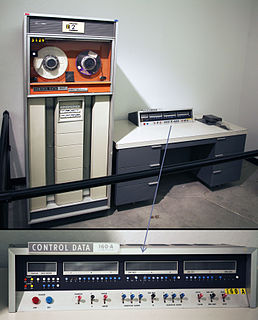 W
WThe CDC 160 series was a series of minicomputers built by Control Data Corporation. The CDC 160 and CDC 160-A were 12-bit minicomputers built from 1960 to 1965; the CDC 160G was a 13-bit minicomputer, with an extended version of the CDC 160-A instruction set, and a compatibility mode in which it did not use the 13th bit. The 160 was designed by Seymour Cray - reportedly over a long three-day weekend. It fit into the desk where its operator sat.
 W
WThe CDC 1604 was a 48-bit computer designed and manufactured by Seymour Cray and his team at the Control Data Corporation (CDC). The 1604 is known as one of the first commercially successful transistorized computers. Legend has it that the 1604 designation was chosen by adding CDC's first street address to Cray's former project, the ERA-UNIVAC 1103.
 W
WThe CDC 3000 series computers from Control Data Corporation were mid-1960s follow-ons to the CDC 1604 and CDC 924 systems.
 W
WThe CDC 6000 series was a family of mainframe computers manufactured by Control Data Corporation in the 1960s. It consisted of the CDC 6200, CDC 6300, CDC 6400, CDC 6500, CDC 6600 and CDC 6700 computers, which were all extremely rapid and efficient for their time. Each was a large, solid-state, general-purpose, digital computer that performed scientific and business data processing as well as multiprogramming, multiprocessing, Remote Job Entry, time-sharing, and data management tasks under the control of the operating system called SCOPE. By 1970 there also was a time-sharing oriented operating system named KRONOS. They were part of the first generation of supercomputers. The 6600 was the flagship of Control Data's 6000 series.
 W
WThe CDC 6600 was the flagship of the 6000 series of mainframe computer systems manufactured by Control Data Corporation. Generally considered to be the first successful supercomputer, it outperformed the industry's prior recordholder, the IBM 7030 Stretch, by a factor of three. With performance of up to three megaFLOPS, the CDC 6600 was the world's fastest computer from 1964 to 1969, when it relinquished that status to its successor, the CDC 7600.
 W
WCER model 22 is a transistor based computer developed by Mihajlo Pupin Institute (Serbia) in 1967-1968. It was originally intended for banking applications and was used for data processing and management planning in banks, trade and utility companies in Belgrade. Three CER-22 computers were purchased by Beobanka, Jugopetrol and BVK–Belgrade companies..
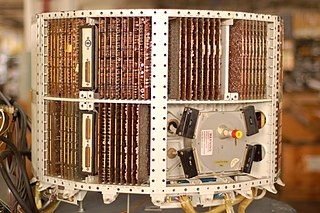 W
WThe D-17B (D17B) computer was used in the Minuteman I NS-1OQ missile guidance system. The complete guidance system contained a D-17B computer, the associated stable platform, and power supplies.
 W
WD2 was a concept and prototype computer designed by Datasaab in Linköping, Sweden. It was built with discrete transistors and completed in 1960. Its purpose was to investigate the feasibility of building a computer for use in an aircraft to assist with navigation, ultimately leading to the design of the CK37 computer used in Saab 37 Viggen. This military side of the project was known as SANK, or Saabs Automatiska Navigations-Kalkylator, and D2 was the name for its civilian application.
 W
WThe Electrologica X1 was a digital computer designed and manufactured in the Netherlands from 1958 to 1965. About thirty were produced and sold in the Netherlands and abroad.
 W
WThe Elliott 803 is a small, medium-speed transistor digital computer which was manufactured by the British company Elliott Brothers in the 1960s. About 211 were built.
 W
WThe EMIDEC 1100 computer was produced by the Computing Services Division of EMI Laboratories in the UK under the leadership of Godfrey Hounsfield in 1958, after one year's development. It used magnetic core memory and transistor technologies and it is claimed to be the first large commercial transistorised machine in the UK.
 W
WFlip-Chip electronic modules were components of digital logic systems made by the Digital Equipment Corporation (DEC) for its PDP-7, PDP-8, PDP-9, and PDP-10, beginning on August 24, 1964. The trademark "Flip-Chip"' was filed on August 27, 1964. Various manuals produced by DEC refer to the modules as "FLIP CHIP", "FLIP-CHIP", "Flip Chip", and "Flip-Chip", with trademark and registered trademark symbols.
 W
WThe GE-200 series was a family of small mainframe computers of the 1960s, built by General Electric (GE). GE marketing called the line Compatibles/200 (GE-205/215/225/235). Oddly, the GE-210 of 1960 is not compatible with the rest of the 200 series.
 W
WThe Harwell CADET was the first fully transistorised computer in Europe, and may have been the first fully transistorised computer in the world.
 W
WThe Honeywell 200 was a character-oriented two-address commercial computer introduced by Honeywell in the early 1960s, the basis of later models in Honeywell 200 Series, including 1200, 1250, 2200, 3200, 4200 and others, and the character processor of the Honeywell 8200 (1968).
 W
WThe ICT 1301 and its smaller derivative ICT 1300 were early business computers from International Computers and Tabulators. Typical of mid-sized machines of the era, they used core memory, drum storage and punched cards, but they were unusual in that they were based on decimal logic instead of binary.
 W
WThe ILLIAC II was a revolutionary super-computer built by the University of Illinois that became operational in 1962.
 W
WThe LINC is a 12-bit, 2048-word transistorized computer. The LINC is considered by some the first minicomputer and a forerunner to the personal computer. Originally named the "Linc", suggesting the project's origins at MIT's Lincoln Laboratory, it was renamed LINC after the project moved from the Lincoln Laboratory. The LINC was designed by Wesley A. Clark and Charles Molnar.
 W
WLINC-8 was the name of a minicomputer manufactured by Digital Equipment Corporation between 1966 and 1969. It combined a LINC computer with a PDP-8 in one cabinet, thus being able to run programs written for either of the two architectures.
 W
WThis is a list of transistorized computers, which were digital computers that used discrete transistors as their primary logic elements. Discrete transistors were a feature of logic design for computers from about 1960, when reliable transistors became economically available, until monolithic integrated circuits displaced them in the 1970s. The list is organized by operational date or delivery year to customers. Computers announced, but never completed, are not included. Some very early "transistor" computers may still have included vacuum tubes in the power supply or for auxiliary functions.
 W
WMailüfterl is a nickname for the Austrian Binär dezimaler Volltransistor-Rechenautomat, an early transistorized computer. Other early transistorized computers included TRADIC, Harwell CADET and TX-0.
 W
WThe Manchester computers were an innovative series of stored-program electronic computers developed during the 30-year period between 1947 and 1977 by a small team at the University of Manchester, under the leadership of Tom Kilburn. They included the world's first stored-program computer, the world's first transistorised computer, and what was the world's fastest computer at the time of its inauguration in 1962.
 W
WSylvania's MOBIDIC, short for "MOBIle DIgital Computer", was a transistorized computer intended to store, sort and route information as one part of the United States Army's Fieldata concept. Fieldata aimed to automate the distribution of battlefield data in any form, ensuring the delivery of reports to the proper recipients regardless of the physical form they were sent or received. MOBIDIC was mounted in the trailer of a semi-trailer truck, while a second supplied power, allowing it to be moved about the battlefield. The Army referred to the system as the AN/MYK-1, or AN/MYK-2 for the dual-CPU version, Sylvania later offered a commercial version of the S 9400.
 W
WThe Monroe Calculating Machine Mark XI was a (general-purpose) stored-program electronic digital computer introduced in 1960 by the Monroe Calculating Machine Division of Litton Industries.
 W
WThe NCR 304, announced in 1957, first delivered in 1959, was National Cash Register (NCR)'s first transistor-based computer. The 304 was developed and manufactured in cooperation with General Electric, where it was also used internally.
 W
WThe NCR 315 Data Processing System, released in January 1962 by NCR, is a second-generation computer. All printed circuit boards use resistor–transistor logic (RTL) to create the various logic elements. It uses 12-bit slab memory structure using magnetic core memory. The instructions can use a memory slab as either two 6-bit alphanumeric characters or as three 4-bit BCD digits. Basic memory is 5000 "slabs" of handmade core memory, which is expandable to a maximum of 40,000 slabs in four refrigerator-size cabinets. The main processor includes three cabinets and a console section that houses the power supply, keyboard, output writer, and a panel with lights that indicate the current status of the program counter, registers, arithmetic accumulator, and system errors. Input/Output is by direct parallel connections to each type of peripheral through a two-cable bundle with 1-inch-thick cables. Some devices like magnetic tape and the CRAM are daisy-chained to allow multiple drives to be connected.
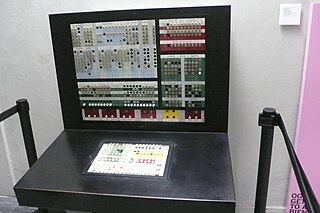 W
WThe Elea 9003 is one of a series of mainframe computers Olivetti developed starting in the late 1950s. The system, made entirely with transistors for high performance, was conceived, designed and developed by a small group of researchers led by Mario Tchou (1924–1961). It was the first solid-state computer designed and manufactured in Italy. The acronym ELEA stood for Elaboratore Elettronico Aritmetico and was chosen with reference to the ancient Greek colony of Elea, home of the Eleatic school of philosophy. About forty units were placed with customers. In August 1964, only a few years after releasing the 9003, Olivetti's mainframe business was sold to GE.
 W
WThe PDP-1 is the first computer in Digital Equipment Corporation's PDP series and was first produced in 1959. It is famous for being the computer most important in the creation of hacker culture at MIT, BBN and elsewhere. The PDP-1 is the original hardware for playing history's first game on a minicomputer, Steve Russell's Spacewar!
 W
WThe PDP-4 was the successor to the Digital Equipment Corporation's PDP-1.
 W
WThe PDP-6 is a computer model developed by Digital Equipment Corporation (DEC) in 1964. It was influential primarily as the prototype (effectively) for the later PDP-10; the instruction sets of the two machines are almost identical.
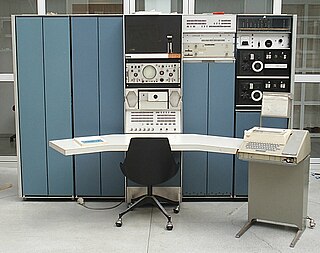 W
WThe PDP-7 was a minicomputer produced by Digital Equipment Corporation as part of the PDP series. Introduced in 1964, shipped since 1965, it was the first to use their Flip-Chip technology. With a cost of US$72,000, it was cheap but powerful by the standards of the time. The PDP-7 is the third of Digital's 18-bit machines, with essentially the same instruction set architecture as the PDP-4 and the PDP-9.
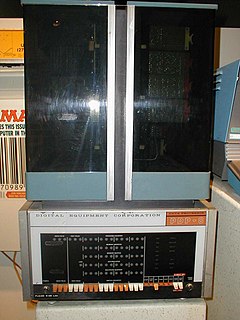 W
WThe PDP-8 is a 12-bit minicomputer that was produced by Digital Equipment Corporation (DEC). It was the first commercially successful minicomputer, with over 50,000 units being sold over the model's lifetime. Its basic design follows the pioneering LINC but has a smaller instruction set, which is an expanded version of the PDP-5 instruction set. Similar machines from DEC are the PDP-12 which is a modernized version of the PDP-8 and LINC concepts, and the PDP-14 industrial controller system.
 W
WThe PDP-15 was the fifth and last of the 18-bit minicomputers produced by Digital Equipment Corporation. The PDP-1 was first delivered in December 1959 and the first PDP-15 was delivered in February 1970. More than 400 of these successors to the PDP-9 were ordered within the first eight months.
 W
WThe Olivetti Programma 101, also known as Perottina or P101, is one of the first "all in one" commercial desktop programmable calculators, although not the first. Produced by Italian manufacturer Olivetti, based in Ivrea, Piedmont, and invented by the Italian engineer Pier Giorgio Perotto, the P101 has the main features of large computers of that period. It was launched at the 1964 New York World's Fair; volume production started in 1965. A futuristic design for its time, the Programma 101 was priced at $3,200 (equivalent to $26,000 in 2019). About 44,000 units were sold, primarily in the US.
 W
WThe SDS 9 Series computers are a backward compatible line of transistorized computers produced by Scientific Data Systems in the 1960s and 1970s. This line includes the SDS 910, SDS 920, SDS 925, SDS 930, SDS 940, and the SDS 945. The SDS 9300 is an extension of the 9xx architecture. The 1965 SDS 92 is an incompatible 12-bit system built using monolithic integrated circuits.
 W
WThe SDS 930 is a commercial 24-bit computer using bipolar junction transistors sold by Scientific Data Systems. It was announced in December 1963, with first installations in June 1964.
 W
WTitan was the prototype of the Atlas 2 computer developed by Ferranti and the University of Cambridge Mathematical Laboratory in Cambridge, England. It was designed starting in 1963, and in operation from 1964 to 1973.
 W
WThe TRADIC was the first transistorized computer in the USA, completed in 1954.
 W
WThe TX-0, for Transistorized Experimental computer zero, but affectionately referred to as tixo, was an early fully transistorized computer and contained a then-huge 64K of 18-bit words of magnetic core memory. Construction of the TX-0 began in 1955 and ended in 1956. It was used continually through the 1960s at MIT. The TX-0 incorporated around 3600 Philco high-frequency surface-barrier transistors, the first transistor suitable for high-speed computers. The TX-0 and its direct descendant, the original PDP-1, were platforms for pioneering computer research and the development of what would later be called computer "hacker" culture.
 W
WThe MIT Lincoln Laboratory TX-2 computer was the successor to the Lincoln TX-0 and was known for its role in advancing both artificial intelligence and human-computer interaction. Wesley A. Clark was the chief architect of the TX-2.
 W
WThe UNIVAC LARC, short for the Livermore Advanced Research Computer, is a mainframe computer designed to a requirement published by Edward Teller in order to run hydrodynamic simulations for nuclear weapon design. It was one of the earliest supercomputers.
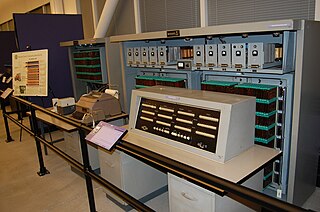 W
WThe Zuse Z23 was a transistorized computer first delivered in 1961, designed by the Zuse KG company. A total of 98 units were sold to commercial and academic customers up until 1967. It had a 40-bit word length and used an 8192 word drum memory as main storage, with 256 words of rapid-access ferrite memory. It operated on fixed and floating-point binary numbers. Fixed-point addition took 0.3 milliseconds, a fixed point multiplication took 10.3 milliseconds. It was similar in internal design to the earlier vacuum tube Z22. Related variants were the Z25 and Z26 models.